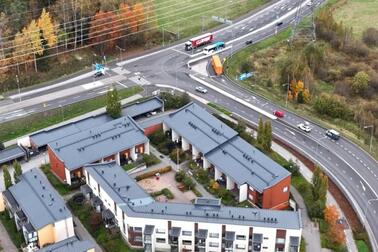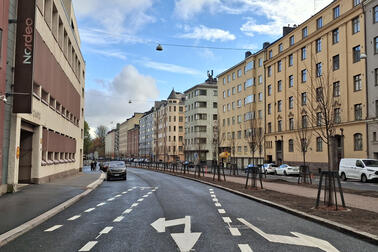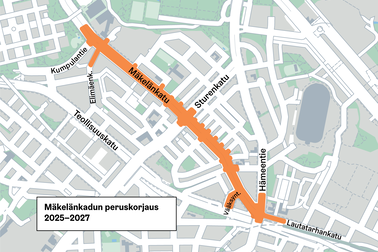
Approved in 2018, Helsinki’s general plan for automatic traffic control identified 70 sites for automatic traffic control points on the city’s street network. The city has decided to increase automatic traffic control specifically to improve traffic safety. So far, 33 of the control points included in the general plan have been built.
The City of Helsinki recently investigated the effects of automatic traffic control on the speeds on the Helsinki street network. Carried out by VTT Technical Research Centre of Finland Ltd, the study measured driving speeds before the installation of the new automatic control points in 2019 and after their installation in 2022. The speeds were measured in four sites where an automatic control point was introduced in 2021.
Speed measurements were also made elsewhere on the street network to assess with a statistical model whether the speed changes were due to the introduction of an automatic control point or a possible general reduction in speeding.
Automatic monitoring reduced speeding incidents
According to the study, the proportion of motorists exceeding the speed limit in free traffic flow by more than 10 kilometres per hour decreased by 56% after the introduction of automatic traffic control. Before the control point’s installation, 12% of ‘free’ cars exceeded the speed limit by more than ten kilometres per hour at the automatic control point site. After the installation of the control point, the share was only five per cent. Measurements carried out elsewhere on the street network showed practically no change in the proportions. Based on the statistical model, the decrease in significant speeding can be attributed to the introduction of automatic control points.
“The impact also extended beyond the immediate vicinity of an automatic control point. The proportion of motorists exceeding the speed limit by over 10 kilometres per hour in free traffic flow decreased by 37% measured on the street section following the automatic control point,” says Roni Utriainen, Traffic Engineer at the City of Helsinki Urban Environment Division.
Automatic traffic control also reduced the proportion of slight speeding incidents, but the impact was smaller than the reduction in significant speeding.
Lower speeds decrease the number of personal injury accidents
Automatic control also reduced the average speeds of the cars. A traffic safety assessment based on the decrease in average speeds suggests that automatic traffic control could reduce the number of personal injury accidents, serious injuries and deaths by 6–16% in areas similar to those studied.
“The speed measurement results confirm that automatic traffic control promotes adherence to the speed limits. Automatic traffic control reduced the proportion of motorists exceeding the speed limit by more than 10 kilometres per hour near the control point and on the street section following the control point,” says Fanny Malin, Research Team Leader at VTT.
Generally, the higher the driving speeds, the greater the number and severity of traffic accidents. Lower driving speeds help drivers to detect traffic situations in time and, in the event of a collision, mitigate the consequences of the accident. Compliance with the speed limits is primarily encouraged by traffic and street design. Still, automatic traffic control has proven to be an effective way to reduce speeding.


